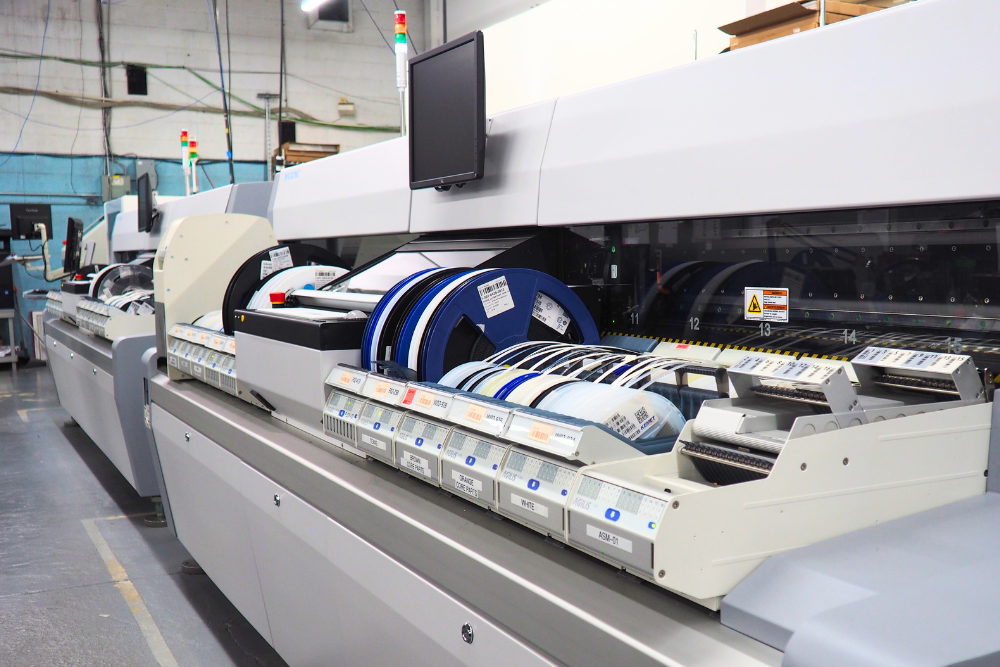
Signs of a cyclical downturn have been popping up in earnings reports lately, and Moog (NYSE: MOG-A) (NYSE: MOG-B) has definitely felt the pinch from weakening conditions in its core markets. Coming into Friday's fiscal first-quarter financial report, Moog investors were expecting slight declines in sales and net income. What they got, though, was a much more downbeat assessment than what we've seen recently from TransDigm Group (TDG +2.16%) and other companies that serve the aerospace industry. Let's take a closer look at Moog and what its results say about its future.
Moog sees big drops
Moog's fiscal first-quarter results were a lot worse than most investors were prepared to see. Revenue of $568 million was down 10% from year-earlier results, and represented a major shortfall from the $610 million consensus forecast among investors. Net income dropped by more than 25%, weighing in at $26 million, and that produced earnings of $0.71 per share. That result was more than a dime per share lower than investors had expected.
Most of Moog's most important segments suffered sales declines. Aircraft controls revenue dropped 4%, with weakness both from falling commercial original-equipment and aftermarket sales and from weakness in military-related revenue. The space and defense controls segment suffered a much larger decline of 17%, and the company blamed what it called a cyclical decrease in demand for components for satellites. Lower sales related to security also weighed on the segment.
The industrial systems segment took a 6% revenue hit, with the energy industry contributing to the decline from lower volumes of oil and gas exploration equipment sales. Industrial automation equipment demand also fell, and the components segment saw revenue plunge 26% on a combination of falling oil prices and the rising dollar. Only the medical devices segment managed to pick up gains, rising 13% due to high demand for IV and enteral pumps.
CEO John Scannell didn't seem all that surprised by the company's performance. "We expected a slow start too the year," Scannell said, "and we came in at the low end of our guidance for the quarter." Nevertheless, the CEO pointed to deteriorating conditions over the past three months that have led the company to become more pessimistic about certain aspects of its business in the short-term, especially in areas outside aerospace and defense.
What's next for Moog?
Still, Moog isn't slowing down its efforts to keep moving forward. As Scannell said, "We're still investing in the long-term future across all of our markets, and we're promoting more efficient processes in our operations. Over the past couple of years, we've seen improvements in several operating segments." Moog thinks it can work harder to take advantage of more opportunities in the future.
Nevertheless, Moog expects to hit further roadblocks in the near-term. In its projected guidance, Moog cut its sales forecast for the year by $100 million, and the resulting $2.47 billion forecast will be lower than what it posted in its previous fiscal year. Similarly, full-year fiscal 2016 earnings of $3.35 per share is well below the $4 per share that the company had guided investors toward just three months ago.
Perhaps the worst news is that Moog is suffering where other players in the industry are thriving. TransDigm Group, for instance, produced solid gains in revenue and earnings in its most recent quarter, and it has been able to sustain positive momentum even in the tough economic environment. TransDigm's approach includes a heavily acquisition-based strategy, but partnerships with aircraft makers have also helped TransDigm distinguish itself in the space.
Moog investors were extremely disappointed with the company's results, sending the stock down more than 17% following the announcement. Given concerns about its ability to take advantage of the booming aerospace market, Moog needs to reassure investors in the future that it will find new ways to grow that can help pull it out of the revenue and earnings tailspin that it saw during the first quarter.







